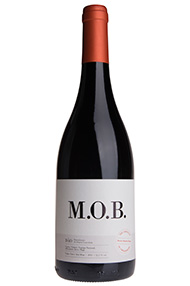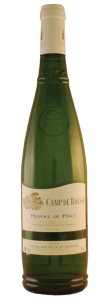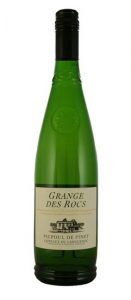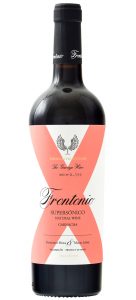Tasting Notes
 Emma says: “Today was equal pleasure and pain when it comes to the 52grapes experience. Arriving home late from a work trip, we realised tonight was the only night we had to try a Fiano before our weekly newsletter deadline.
Emma says: “Today was equal pleasure and pain when it comes to the 52grapes experience. Arriving home late from a work trip, we realised tonight was the only night we had to try a Fiano before our weekly newsletter deadline.
So I sit here bleary eyed, wishing I was in bed, but instead musing over a Fiano. Thankfully this wine has reminded me of what is so enjoyable about our project. Instead of buying one of the Fianos I have tasted before, I ventured into a small and beautiful Italian specialist wine shop, “Passione Vino” in Shoreditch, to buy a version I hadn’t tried before. And this Campanian Fiano is really unusual. It feels like a traditional rather than a modern version. Most of the modern styles I’ve tried are crisp, fresh and floral, quite straightforward and thirst quenching with mild white peach flavours. Think of Pinot Grigio with more fragrance and richer fruit flavour.
But this version is very different to that. For a start the aroma is softer, more honeyed with gentle floral notes (almost pot pourri in style). The palate is quite waxy with orange peel, sweet peach compote flavours and a white tea savoury note. It feels like a wine that would work well with food for its extra body, texture and richness in fruit. But we aren’t talking bold tropical fruit, it is altogether gentle and mild. It didn’t blow my mind but I found it interesting enough to keep going back to in order to consider its flavour palate. I think that is honestly why these small producer styles from a small specialist shop can be a fun experience. They often offer something slightly different from the mainstream styles.
And what do I mean by traditional rather than modern for Campania? Well the modern styles can be made in a very precise technical way, avoiding any oxygen contact to keep the fragrance very fresh. Traditional styles are less protective, meaning a little bit more oxygen interacts with the grape and softens out those aromas, bringing on the honeyed character that otherwise tends to come to these wines later with age.”
Andy says: “Emma was away for a night, so I took full advantage of the “Meet the new CEO” bar tab, and was a little, how do we say, jaded.
But needs must, and so I bravely ploughed into this week’s Fiano. Tasting straight from the fridge, it was crisply cold, with a slightly oily mouthfeel, quite viscous, and somewhat sweet. Remembering last week’s notes on serving temperature, I waited for the wine to thaw out a little before trying again. All the sweetness went and it became more astringent, and a touch sour. Not the worst white wine I’ve ever tasted, it was a perfectly pleasant drink, but not necessarily one I’ll rush back to either. Perhaps I need to try the modern style described above.”
Buying Guide
This pretty little white comes from the Southern Campania region in Italy. It can also be found in Australia and Sicily, but we are going to try the original. Head to the Italian white section and you can find this wine in lots of the major retailers, but, after some Googling many seem to be from Sicily. Try to get one from Campania – the area of Avellino produces the best Fiano. Sicily will do if that’s all you can find. It will be a bit more fruity and less floral than the wines from Campania.


 Emma says: “This week has certainly been a mission. In fact I’ll be surprised if anyone joins in. After suggesting that people find a Douro red which has predominantly Touriga Nacional in the blend our search of London showed this was nigh on impossible.
Emma says: “This week has certainly been a mission. In fact I’ll be surprised if anyone joins in. After suggesting that people find a Douro red which has predominantly Touriga Nacional in the blend our search of London showed this was nigh on impossible.
 Emma says: “After a full on gutsy red last week this wine really is ringing the changes. The choice of a South African Chenin may be a bit controversial to those who love the versions from its birthplace the Loire. I wanted to give a nod to South Africa because I think they are producing increasingly interesting versions of Chenin in their own particular style.
Emma says: “After a full on gutsy red last week this wine really is ringing the changes. The choice of a South African Chenin may be a bit controversial to those who love the versions from its birthplace the Loire. I wanted to give a nod to South Africa because I think they are producing increasingly interesting versions of Chenin in their own particular style.


 Emma says: “The 52 grape challenge has hit new heights this week. I sit here with my chilled glass of Picpoul but it should be a Chardonnay because I’m as lonely and sad as Bridget Jones.
Emma says: “The 52 grape challenge has hit new heights this week. I sit here with my chilled glass of Picpoul but it should be a Chardonnay because I’m as lonely and sad as Bridget Jones. dry, and well, a little rough. I think ‘rustic’ is the term. There was a bit of a burn, and it felt more than the 12.5% on the label. I sensed a little tingle on the tongue, which initially I thought was CO2, but after a few sips more I decided it wasn’t and that the wine was ‘as flat as a pancake’.
dry, and well, a little rough. I think ‘rustic’ is the term. There was a bit of a burn, and it felt more than the 12.5% on the label. I sensed a little tingle on the tongue, which initially I thought was CO2, but after a few sips more I decided it wasn’t and that the wine was ‘as flat as a pancake’.
 I then saw the labels of these wines and it threw me even more. No words, just pictures of a semi clad ghetto-tastic lady holding a machete and sitting on a car. The winemaker was lovely, but when he came to describe his wines he spoke more about the inspiration for the labels than the wines themselves. I’m saying this because i’m not feeling much like tasting Nero D’Avola tonight. I drank a little too much of those wines….
I then saw the labels of these wines and it threw me even more. No words, just pictures of a semi clad ghetto-tastic lady holding a machete and sitting on a car. The winemaker was lovely, but when he came to describe his wines he spoke more about the inspiration for the labels than the wines themselves. I’m saying this because i’m not feeling much like tasting Nero D’Avola tonight. I drank a little too much of those wines….


 Tasting Notes
Tasting Notes
 you can get sweet raisin grapes and green un ripe ones in the same bunch. For me that means it can be jammy and sort of green tasting at the same time. Not a great combination. Then it easily reaches high alcohol, and since I’m on the petite side that extra % or two of alcohol can make all the difference the day after.
you can get sweet raisin grapes and green un ripe ones in the same bunch. For me that means it can be jammy and sort of green tasting at the same time. Not a great combination. Then it easily reaches high alcohol, and since I’m on the petite side that extra % or two of alcohol can make all the difference the day after.

